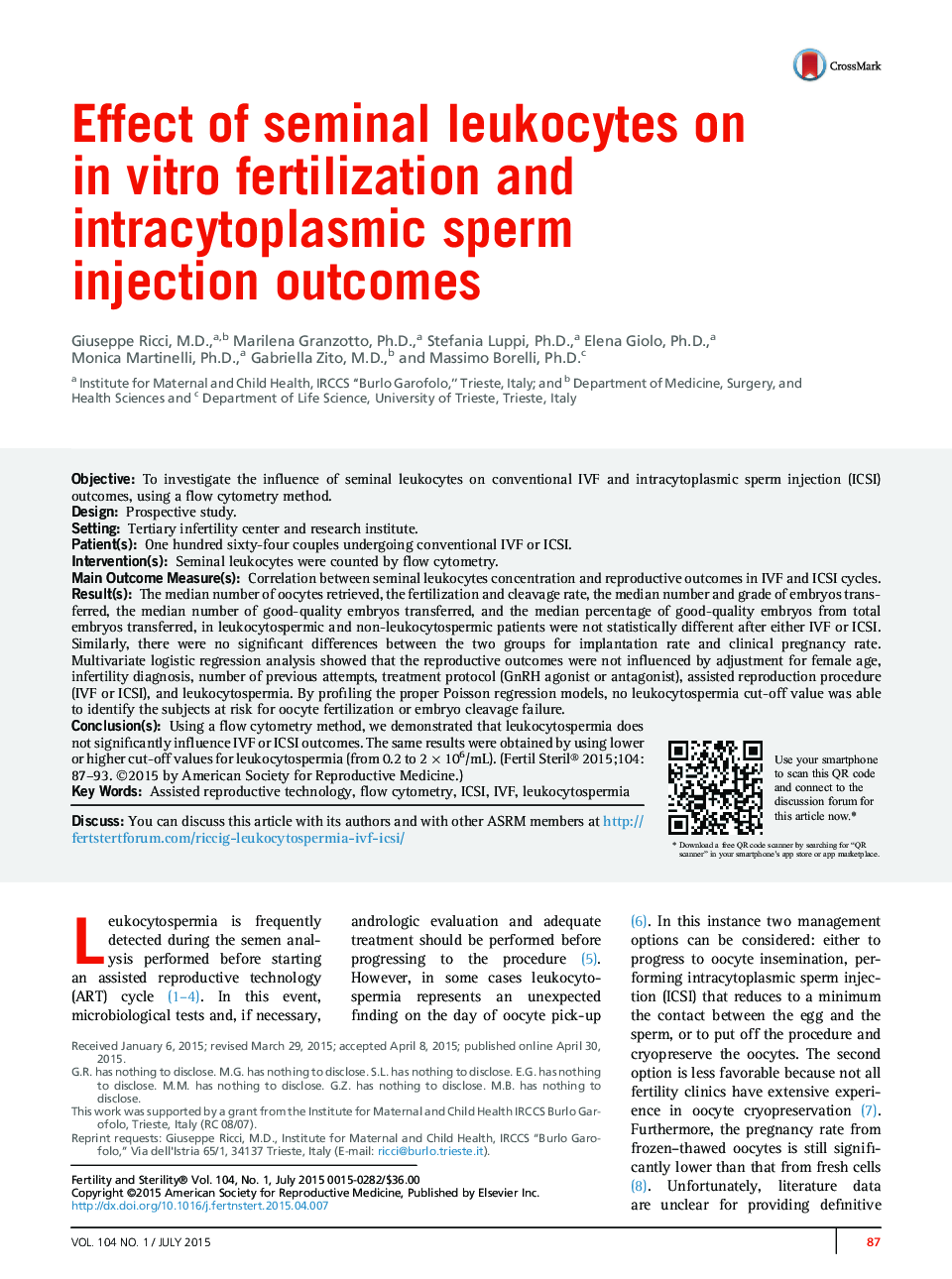| Article ID | Journal | Published Year | Pages | File Type |
|---|---|---|---|---|
| 3934076 | Fertility and Sterility | 2015 | 7 Pages |
ObjectiveTo investigate the influence of seminal leukocytes on conventional IVF and intracytoplasmic sperm injection (ICSI) outcomes, using a flow cytometry method.DesignProspective study.SettingTertiary infertility center and research institute.Patient(s)One hundred sixty-four couples undergoing conventional IVF or ICSI.Intervention(s)Seminal leukocytes were counted by flow cytometry.Main Outcome Measure(s)Correlation between seminal leukocytes concentration and reproductive outcomes in IVF and ICSI cycles.Result(s)The median number of oocytes retrieved, the fertilization and cleavage rate, the median number and grade of embryos transferred, the median number of good-quality embryos transferred, and the median percentage of good-quality embryos from total embryos transferred, in leukocytospermic and non-leukocytospermic patients were not statistically different after either IVF or ICSI. Similarly, there were no significant differences between the two groups for implantation rate and clinical pregnancy rate. Multivariate logistic regression analysis showed that the reproductive outcomes were not influenced by adjustment for female age, infertility diagnosis, number of previous attempts, treatment protocol (GnRH agonist or antagonist), assisted reproduction procedure (IVF or ICSI), and leukocytospermia. By profiling the proper Poisson regression models, no leukocytospermia cut-off value was able to identify the subjects at risk for oocyte fertilization or embryo cleavage failure.Conclusion(s)Using a flow cytometry method, we demonstrated that leukocytospermia does not significantly influence IVF or ICSI outcomes. The same results were obtained by using lower or higher cut-off values for leukocytospermia (from 0.2 to 2 × 106/mL).
